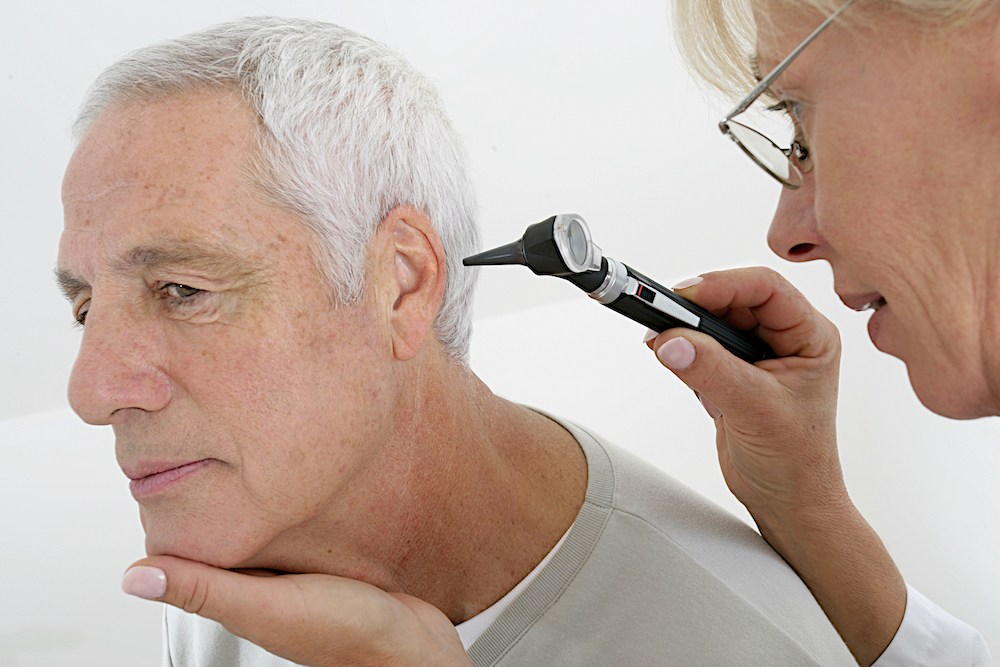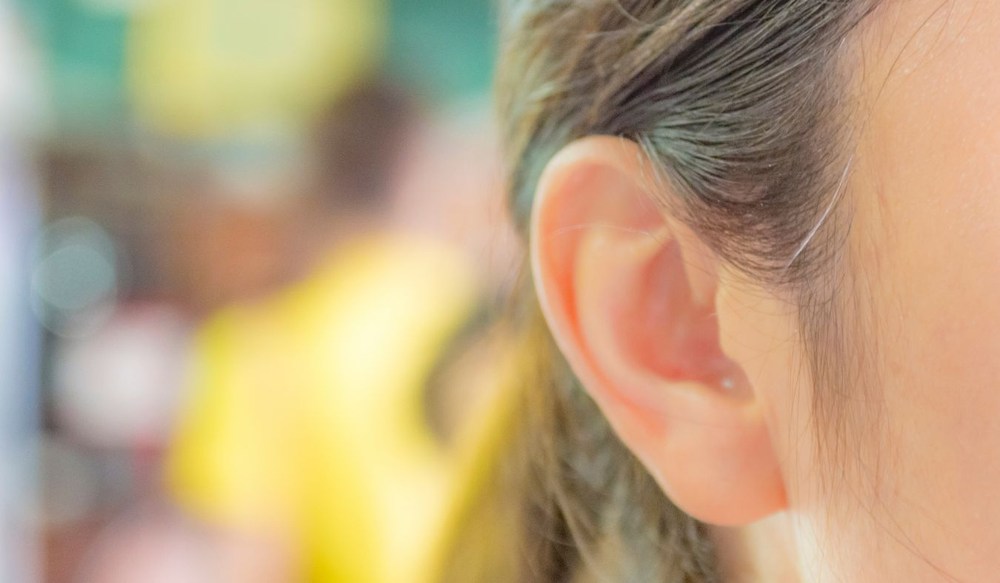How to Choose the Right Hearing Care Provider
Choosing a hearing care provider isn’t just about finding someone

By: admin | April 30, 2024
Your hearing loss is as unique as you are, and so should be the solution. Finding the right hearing aid isn’t about a generic fix – it’s about rediscovering the world of sound on your terms. That’s why choosing a hearing aid that seamlessly integrates into your life is crucial. Imagine attending a lively family gathering and effortlessly following conversations, participating in work meetings or chatting with friends at lunch in spite of background noise. By considering your specific hearing needs, whether it’s difficulty hearing high-pitched sounds or struggling in noisy environments, you can find an ideal hearing aid with features that address your unique lifestyle.
As technology advances, so does the development of these personalized devices. Biometric hearing aids use the unique characteristics of your ear to provide an exceptional listening experience. They analyze and adapt to your personal ear shape and structure, offering a level of clarity and understanding that was previously out of reach. If you’re striving for better hearing health, looking into biometric hearing aids could be your next move.
Let’s break down how biometric hearing aids work. They utilize biometrics, a technology also found in devices like fingerprint scanners and facial recognition systems.
Biometric hearing aids take this concept to the next level. They don’t just adjust to the sound around you; they adjust to you. These devices use the unique characteristics of your ear to create a personalized listening experience that can improve your understanding of speech in noisy environments. If you’re curious about how biometric hearing aids could enhance your daily life, consider speaking with a hearing health professional. They can provide detailed information that fits your specific needs and lifestyle.
The evolution of hearing aid technology is an interesting one, marked by significant advancements and innovations. It’s been quite the journey from the ear trumpets of the 19th century to today’s sophisticated digital devices.
While not technically an electronic device, the ear trumpet served as the earliest known hearing aid. These horn-shaped tools helped amplify sound by collecting and directing it towards the ear canal. Made from various materials like metal, seashells or even animal horns, ear trumpets remained the primary means of assisting hearing loss for centuries.
The invention of the telephone by Alexander Graham Bell proved to be a pivotal moment for hearing aids. Bell’s technology, which included the ability to control loudness and sound distortion, laid the groundwork for the development of the first electric hearing aids.
The 1920s saw the arrival of the first commercially available electric hearing aids. These devices used vacuum tubes to amplify sound, marking a significant advancement over ear trumpets. However, their large size and limited portability restricted their widespread use.
The invention of the transistor in the mid-20th century revolutionized hearing aids. Transistors replaced bulky vacuum tubes, allowing for the development of smaller, more user-friendly hearing aids. This shift in technology significantly improved accessibility and paved the way for wider adoption.
The late 20th century witnessed another breakthrough with the introduction of digital hearing aids. These devices offered a quantum leap in sound quality and functionality. Digital technology allowed for sophisticated features like noise reduction, directional microphones and the ability to program settings based on individual hearing loss profiles. This era marked the beginning of personalized hearing solutions, empowering users to manage their hearing loss with greater control and effectiveness.
As we entered the 21st century, biometric technology added another layer of personalization to hearing aids. These devices not only amplify sound but also adapt to the unique characteristics of your ear for an improved listening experience.
The evolution of hearing aid technology has been driven by a commitment to improving quality of life for individuals like you who experience hearing loss. As we look to the future, it’s exciting to think about what further advancements are on the horizon.
Now, let’s discuss the science behind biometric hearing aids. This advanced technology is truly impressive, using detailed measurements of your unique ear shape and structure to optimize sound delivery. It’s a process that requires precision and expertise, but the result is a personalized hearing experience that can significantly enhance your understanding of speech in noisy environments.
Let’s highlight some unique aspects of biometric hearing aids. Unlike traditional hearing aids, these devices consider the unique shape and structure of your ear to deliver a more personalized listening experience. This means you can enjoy clearer sound and better understanding in different listening environments.
In addition, biometric hearing aids offer the advantage of automatic adjustments. These smart devices can detect changes in your environment and adjust their settings accordingly for optimal performance. Interested in experiencing the benefits of these advanced devices? It might be time to reach out to a hearing health professional for more information!
Let’s look at how personal ear features can impact sound perception. It’s an interesting aspect that truly emphasizes the importance of individualized hearing solutions. Each person’s ear is unique in its shape and structure, much like a fingerprint. This uniqueness can significantly influence how we perceive sound.
Here are some key points about personal ear features and sound perception:
Let’s take a closer look at how a biometric hearing aid studies your ear. It’s a process that involves precision and technological finesse, enabling these advanced devices to provide a truly personalized hearing experience.
Biometric hearing aids use high-resolution sensors to capture detailed measurements of your unique ear shape and structure. This data is then analyzed by advanced algorithms which adjust the device settings according to your individual needs. This ensures optimal sound delivery tailored specifically for you.
Here are some key points about this process:
Let’s talk about some of the advantages associated with these innovative devices. One of the main benefits is the personalized listening experience they offer. By taking into account your unique ear characteristics, these hearing aids can provide you with an enhanced understanding of speech, even in noisy environments.
Another advantage lies in their automatic adjustment feature. Biometric hearing aids are smart devices that can detect changes in your environment and adjust their settings accordingly for optimal performance. This means fewer manual adjustments for you and a smoother, more comfortable listening experience throughout your day. It’s clear that biometric hearing aids offer a host of benefits that could significantly improve your quality of life if you’re dealing with hearing loss.
Biometric hearing aids can be an excellent choice for individuals seeking a highly personalized listening experience. In particular, those who frequently find themselves in noisy environments or have difficulty understanding speech may greatly benefit from the tailored function of these devices. A hearing health professional can provide valuable guidance to determine if biometric hearing aids are the right choice for you.
When choosing a biometric hearing aid, it’s important to remember that these devices are not one-size-fits-all. They require careful consideration and consultation with a hearing professional to ensure they meet your specific needs.
One surprising fact is that nearly 80% of adults who could benefit from using a hearing aid do not use them, according to the National Institute on Deafness and Other Communication Disorders. This statistic underscores the importance of understanding all your options, including biometric hearing aids, before making a decision about your hearing health care.
Biometric hearing aids are like stepping into a world where technology and personalization come together to enhance your hearing experience.
Think of it as a tailor-made suit versus an off-the-rack one. A tailor-made suit is custom-fit to your measurements, ensuring a perfect fit and comfort. Similarly, biometric hearing aids are tailored to your unique ear shape and structure, offering you an unparalleled listening experience.
So, if you’re looking for ways to improve your hearing health, considering biometric hearing aids could be an excellent move. It’s always best to consult with a hearing care provider who can guide you through the process and help determine if these advanced devices are right for you.
It’s clear that advanced devices offer a personalized solution to hearing health, allowing you to actively take part in better hearing. They adapt to your unique ear characteristics, providing an enhanced listening experience and improved understanding of speech in noisy environments. If you’re intrigued by the potential benefits of biometric hearing aids and considering them as part of your journey towards better hearing health, our team at Life Hearing Health Centers is here to help.
We invite you to reach out for more information or schedule a consultation with one of our trained professionals at any one of our locations. We are conveniently located in Fort Myers, Marco Island and Naples (two locations), FL, as well as Rockford, IL (two locations). You can contact us directly at (888) 264-6164.

Choosing a hearing care provider isn’t just about finding someone
By: admin | November 18, 2025

Cultural sensitivity in hearing care goes beyond simply providing the same
By: admin | September 24, 2025

When you bring your new baby home, you’re suddenly responsible for
By: admin | May 23, 2025
